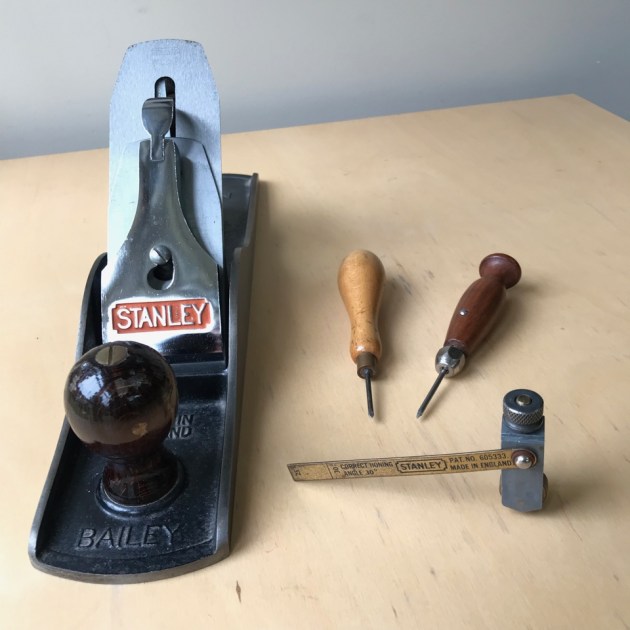Three tools I can't live without, part 2
Words and photo: David Rogers, Melbourne
It was easy to choose the three tools I can’t live without. They're all quite ordinary, get used every day and could probably be replaced by another tool. But there’s one reason that makes them irreplaceable.
Stanley Bailey 5-1/2 jack plane
This superb English-made plane is the fundamental workhorse in my workshop, where I work only with hand tools. It’s the first tool used in every project to do the initial hard yards of stock flattening and squaring, and is often still at work at the end of the project trimming up fine details. It finds every high point, leaves a gleaming finish and only needs minimal help from a jointer and smoothing plane afterwards to complete the stock preparation. That is of course, providing I keep it sharp!
Stanley number 50 honing guide
This simple little honing guide is the best I’ve used. It’s quick to set up, holds the blade rock solid and requires no maintenance. I find the narrow wheel a bonus as it facilitates cambering the blade, something I find to be a limitation with wide-wheeled guides. It includes a swing arm to quickly set the blade protrusion for either 25 or 30 degrees, but home-made stops at other angles increase its versatility in that respect. It only fits plane blades of the Stanley 2-inch pattern, that is, with the central cut-out, so it won’t work with other blade designs. However, I use it on all Stanley, Lie-Nielsen, Veritas and even old Mathieson planes of that pattern with great success.
Pair of awls
These are great! The needle-nosed awl (with the dark handle) will accurately place a hole for drilling, especially when it finds its way into the intersection of two perpendicular scribe lines. The wide blade awl (the light handle) increases the hole to accommodate a drill bit and avoid wander when starting to drill. But they are so useful for everything: getting shavings out of clogged plane mouths, clearing something from tiny corners, poking through a narrow hole to clear it and so on. The list is endless.
What these tools mean to me
But the reason why I can’t live without these tools is that they, plus some others, came to me from my father who passed away when I was a young man. They then spent more than three decades in boxes moving around Australia and overseas while I pursued a career and raised a family, leaving no time for woodwork. Now they’re finally in my workshop and hard at work. They’re all around 70 years old and have at least that life left in them. Every time I reach for them I feel that I’m reaching to shake my father’s hand. And that means I can’t live without them.
Which tools can’t you live without? Email your top three to linda@woodreview.com.au – we’ll publish the best responses here on our website.


